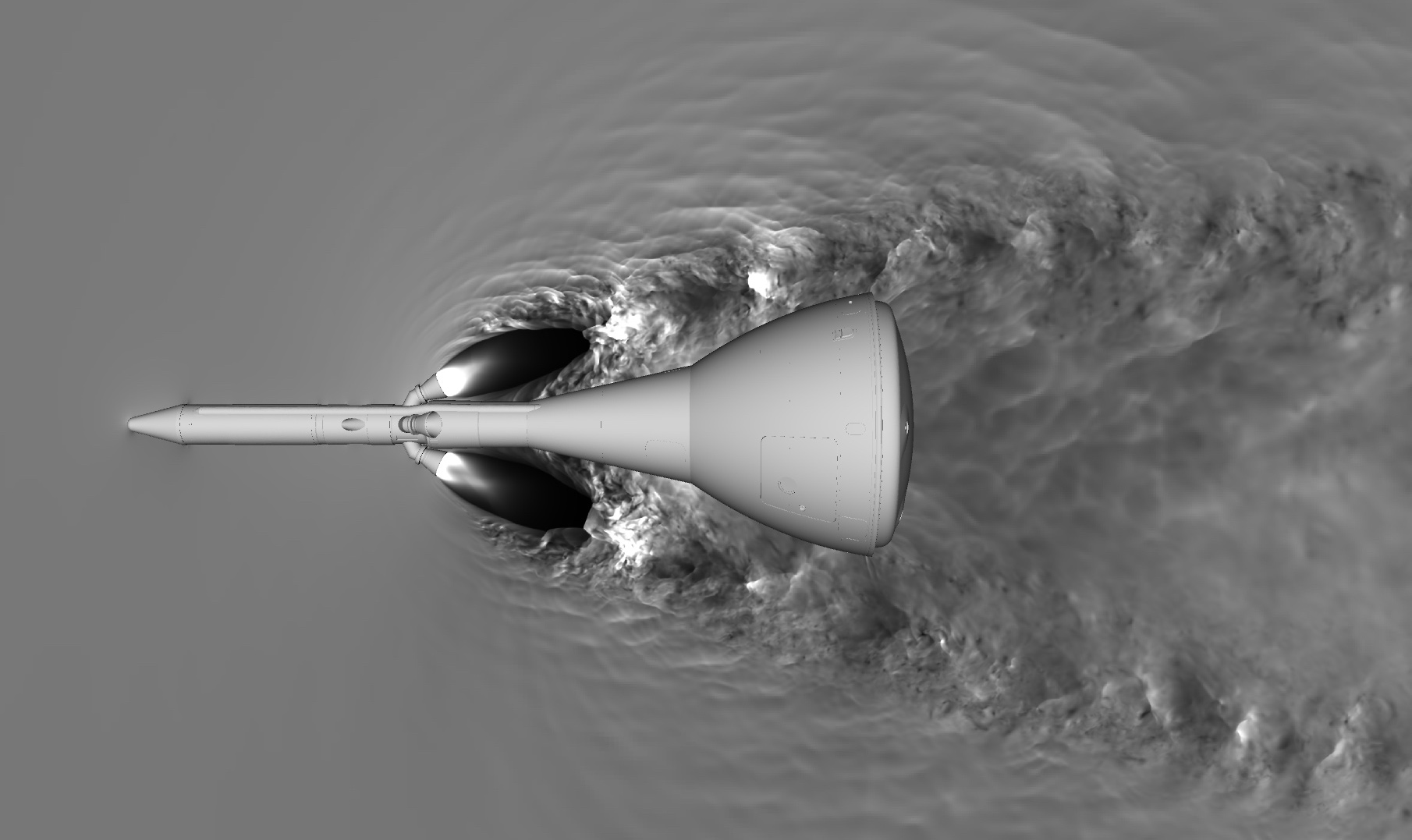Stay Up to Date
Submit your email address to receive the latest industry and Aerospace America news.
The CFD Vision 2030 Integration Committee advocates for, inspires and enables community activities recommended by the vision study for revolutionary advances in the state-of-the-art of computational technologies needed for analysis, design and certification of future aerospace systems.
Significant developments continued this year toward achieving the goals defined in NASA’s CFD Vision 2030 study released in 2014. Academia made progress on algorithms and solvers for both second-order and higher-
order methods. While second-order codes continue to dominate industrial applications, higher-order solvers are beginning to show their promise. Testing, conducted at United Technologies Research Center in February, of the high-order discontinuous-Galerkin solver eddy, developed at NASA’s Ames Research Center in California, has demonstrated that it is an order of magnitude faster for the same level of accuracy on canonical benchmarks than existing production solvers. This demonstrates the potential for emerging high-order scale-resolving methods to impact the design and analysis of turbomachinery components. Development continues in the area of automated high-order mesh generation to enable efficient use of h-p refinement, varying the local mesh size (h) and polynomial degree (p).
The CFD 2030 vision study emphasized the importance of developing algorithms better-suited to the many core computing architectures of tomorrow toward achieving the time-and-space resolution goals for scale-resolving simulation. Earlier this year the Launch Ascent and Vehicle Aerodynamics, or LAVA, team at Ames refactored its LAVA Cartesian framework to better exploit these new architectures. In collaboration with the Orion Multi-Purpose Crew Vehicle loads and dynamics team at NASA’s Johnson Space Center in Houston, the LAVA team demonstrated in June the power of this approach by producing the most detailed turbulence-resolving simulations yet of various abort scenarios.
Leveraging the same Cartesian adaptive mesh refinement infrastructure used in the Orion simulations, the LAVA team implemented the Lattice-Boltzmann method, or LBM, which promises to be an order of magnitude faster than traditional approaches on the same mesh, to simulate vehicles in unsteady subsonic flows. The team demonstrated in August that LBM can accurately predict the acoustics of a small but complex quadcopter drone in forward flight with a one-week turnaround time and no manual mesh generation effort. Coupling LBM with far-field noise propagation software enables capturing tonal noise and showed good agreement in broadband noise trends when compared to wind tunnel microphone data.
CFD computations by researchers at Ames and NASA’s Langley Research Center in Virginia showed that nonlinear turbulence modeling (such as with quadratic constitutive relations or a full Reynolds stress model) is necessary to predict the size of the separation bubble in the juncture flow experiment conducted in Langley’s 14-by-22-foot Subsonic Tunnel. Areas of disagreement, particularly in the prediction of Reynolds stresses remain, necessitating additional research in turbulence modeling.
At AIAA’s Aviation Forum in June, NASA’s Aeronautics Research Mission Directorate announced the selection of a new technical challenge for its Revolutionary Computational Aerosciences effort to “develop and demonstrate computationally efficient eddy-resolving modeling tools that predict maximum lift for transport aircraft with same accuracy as certification flight tests.” A significant fraction of the certification flight testing is done in the high-lift area of the flight envelope and use of accurate CFD tools could save hundreds of millions of dollars in new aircraft development programs by reducing flight-test requirements as well as reduce testing risk by improving the preflight characterization of the aircraft behavior. A collaborative Boeing-NASA high-lift test on Common Research Model began in October in the QinetiQ tunnel in the United Kingdom to provide experimental data to allow validation of CFD tools for this important area of the flight envelope. At a NASA review in September, a Stanford University team showed wall-modeled large-eddy simulation results for the Japan Aerospace Exploration Agency, or JAXA, standard model in good agreement with experiment for maximum lift, showing the promise for such cost-efficient scale resolving methods.
The CFD Vision 2030 Integration Committee’s website.
Related Posts
Stay Up to Date
Submit your email address to receive the latest industry and Aerospace America news.




